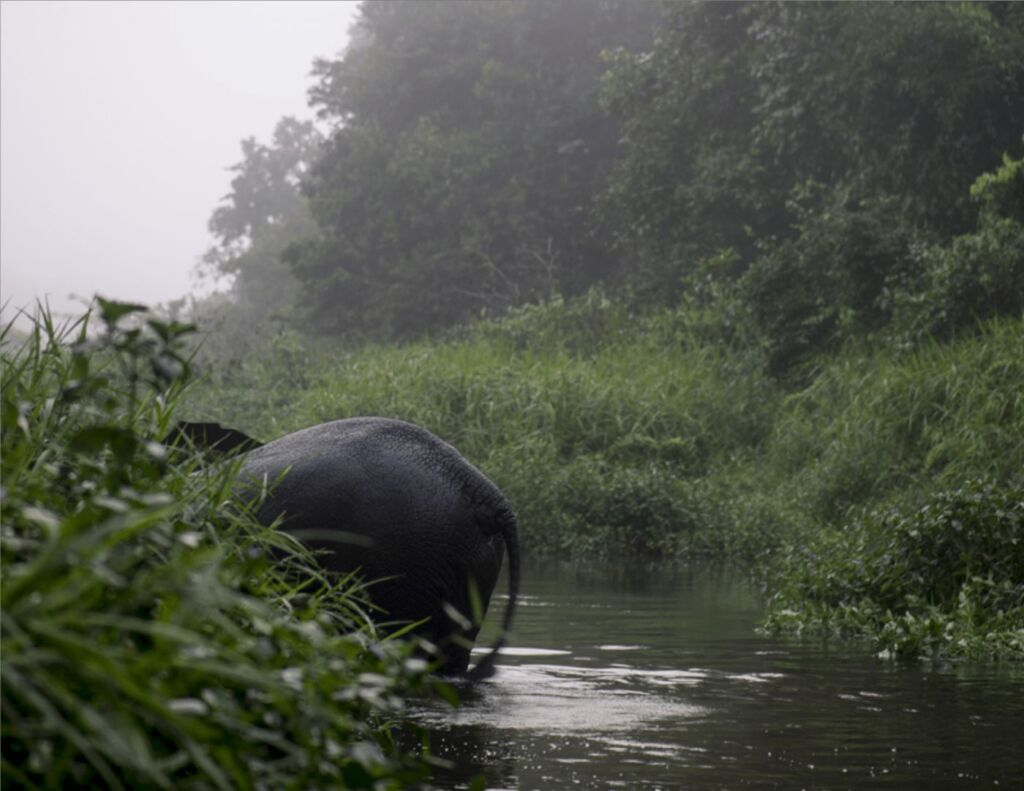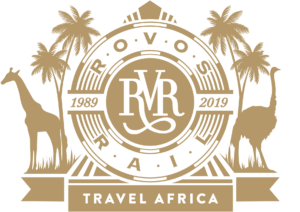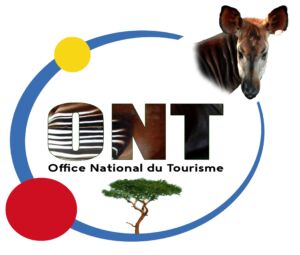Congo is home to many reserves, hunting grounds and national parks. Below we discuss the most important national parks of Congo-Kinshasa
Garamba National Park
Garamba National Park is a 5,200 km2 national park in the northeast of the Democratic Republic of the Congo and is one of the oldest parks in all of Africa. In 1980 it was declared a UNESCO World Heritage Site and a stronghold for the northern white rhinoceros, which is now sadly extinct. It is an important refuge for elephants, giraffes and lions. Garamba is currently managed by African Parks in cooperation with the ICCN of Congo since 2005.
Garamba National Park got its park status in 1938 and is almost 5.000 km2 big. It is located in the extreme north-east corner of Congo and is bordered by South Sudan. It consists mainly of Guinea-Congolese and Guinea-Sudanese savanna which are home to a large variety of animals. There was a huge decline in animal populations in recent decades due to poaching, especially during the war in Sudan as tens of thousands of Sudanese refugees fled to the park in the early nineties which resulted in poaching and illegal logging. Afterwards it also suffered from Ugandese militias who were hiding in the park.
Garamba is home to many mammal species, including several species of antelope, as well as buffalo, elephant, hyena, wild boar, giraffe, hippo, and lion. Garamba is home for the sole surviving population of Kordofan giraffes in Congo with less than 60 individuals. Garamba also has one of the largest surviving elephant populations in the country. The elephants of Garamba are a hybrid of the African savanna variety and the African forest elephants. There are currently less than 2.000 elephants in Garamba National Park.
Garamba National Park has great infrastructure and an amazing team. It is possible to go on safari in Garamba National Park and guests usually stay one week. Getting to Garamba National Park is not easy and the safest way is to go by private plane, either from Uganda, Goma or Bunia. Please, contact us if you want to travel to Garamba National Park and we will set up your safari at Garamb National Park.
Virunga National Park
Virunga National Park is a national park in the Albertine Rift Valley in the east of the Democratic Republic of the Congo and has been a protected region since 1925. Since 1979 Virunga has been listed as a UNESCO World Heritage Site for its rich biodiversity and being home to mountain gorillas. The park has a little over 8.000 km2. It is bordered by the Rwenzori Mountains and Rwanda and Uganda in the east. There are two active volcanoes in Virunga National Park: the Nyiragongo and the Nyamuragira. They are responsible for the current shape and ecosystem of the park. Virunga is well known for its populations of mountain gorillas and golden monkeys.
In the north of Virunga we can find savanna and montane forests of the Albertine Rift. In the Rwenzori Mountains we find the highest peak of Mount Stanley at 5.109. At this height we can also find snow. In the middle of the park we find Lake Edward, which stretches into Uganda. In the south the park borders Kivu Lake and includes
Nyamuragira, Nyiragongo and Mikeno volcanoes and the forests on their slopes.
Besides mountain gorillas we also can see other primates such chimpanzees, red-tailed monkeys, blue monkeys, golden monkeys, colobus, De Brazza’s monkey, forest elephants, buffalo, hippo, okapis, duikers, bongos, aardvarks, bushbuck, waterbuck, leopards, lions, pangolin and more.
Virunga truly is a park of exceptional beauty with lush green hills and fertile lands and magnificent views. A hike on the Nyiragongo and tracking the mountain gorillas are among the top activities in all of Africa. Unfortunately safety in the park is very unstable as there have been several deadly attacks in and around the park by rebel groups. The park is constantly under threat by poachers and illegal loggers who cut the trees for charcoal production. In 2011 Soco International wanted to drill for crude oil and the park opposed it. Prince Emmanuel de Mérode was attacked in 2014 during tensions and after international protest and the release of the documentary ‘Virunga’ operations were ceased. The park was once home to hundreds of thousands of refugees in the nineties and still has tens of thousands of people who stayed behind and who cut trees illegally or hunt animals. Park rangers are often killed during confrontations with militias and locals.
Rangers now receive paramilitary training and get funding to get good weapons. There is quite some criticism about the militarization of the rangers as some claim this only increases conflicts as the local community often doesn’t have anywhere else to go and depends on the protection of militias.
Please, contact us if you would like to visit the Virunga National Park and go gorilla tracking and/or climb the Nyiragongo Volcano.
Salonga National Park
In the heart of the Democratic Republic of Congo, we find one of the biggest national parks in all of Africa: Salonga National Park. The park has an area of approximately 36.000 sq km, which is bigger than the size of Belgium! It is the largest protected tropical rainforest in Africa and is located in four different provinces.
Salonga is a very remote park and not easy to get to. You have to enter the park by boat in the north coming from Mbandaka or either by flying to Ilebo in the south, which has only one flight a week (if even) or you could also drive from Kinshasa, first by car and then by motorbike for several days to enter the park from the south. For those who can make it and have the financial means to get there, they will be treated to a very unique adventure in which you will be in one of the most beautiful rainforests of Africa with a large presence of animals. Animal viewing mostly is done by staying near a clearing and waiting for the animals to come feed on the mineral rich soil. There is no accommodation in the park and you stay in tents, accompanied by park rangers and porters.
Due to its large size, there are still parts of the park which have never been explored. In the south you can enter the park through the Lokoro River which goes to the center. The park was established in 1956 under Tshuapa National Park and became a UNESCO World Heritage Site in 1984. Since 2015 the park is managed by the ICCN together with WWF. The inhabitants of the park are the Kitawalistes, a religious sect, and the lyaelima, who have a good cooperation with the park rangers and live in peace with the bonobos, who have high concentrations among their villages.
Protection of the park is extremely important as it is the second largest rainforest in the world and hosts a unique ecosystem. There are many large mammals in the park such as bonobos, chimpanzees, forest animals, bongos, mangabeys, duikers, leopards, pangolins, colobus, dryas monkey, mongoose, genets, African golden cats, forest hogs, duikers, sitatunga, okapi, bushbuck, forest buffalo and water chevrotain.
We are the only travel agency who have set up expeditions in Salonga National Park and we can set up a travel to Salonga. You will need at least 3 weeks for this and a trip to Salonga is very expensive. Please, let us know if you are interested in a safari to Salonga National Park and we can set it up for you.
Upemba National Park
Upemba is a National Park in the Democratic Republic of Congo, which was created in 1939 and has an area of 10.000 sq km, with an annex of a further 3,000 square kilometers. In the south we can find lakes (including Lake Upemba) and swamps bordered by the Lualaba River. In the north we find the mountains of the Kibara Plateau and grasslands. The biggest threat to the park is poaching and pollution as well as illegal logging. The park suffers heavily from armed attacks by poachers and militias.
Lake Upemba is a shallow lake with a maximum depth of only 3.2 meters and the water level in the lakes is high from March to June and low from October to January. There are a lot of swamps and papyrus in the surrounding area in which we can find a rich variety of fish, birds, reptiles, amphibians and mammals.
Kahuzi-Biega National Park
Kahuzi-Biega National Park is a park of approximately 6.000 sq km and is located in the east on the Democratic Republic of Congo and just west to the city of Bukavu near Lake Kivu. It has been a national park since 1970 and is named after two inactive volcanoes: Mont Kahuzi and Mont Biega who are both located in the park. The park is mostly known for its eastern lowland gorillas and it is possible to track gorillas in Kahuzi Biega. During your stay in Kahuzi Biega you can either camp or stay at the newly build bungalows inside the National Park. The gorilla tracking at Kahuzi Biega is excellent and a worthy alternative for a gorilla safari at Virunga.
The Kahuzi-Biega National Park has been a UNESCO World Heritage Site since 1980 for its unique biodiversity of rainforest habitats and because it is home to the eastern lowland gorillas. A small area of the park is in the Mitumba Mountains of the Albertine Rift in the Great Rift Valley, and the majority of it is in lowlands. A 7.4 km wide corridor connects the mountainous and lowland areas. Within the boundaries of the park are two volcanoes: Kahuzi (3,308 m) and Biéga (2,790 m).
There are approximately 349 species of birds and 136 species of mammals in Kahuzi-Biega and more than 1,178 plant species have been identified in the highlands of the park alone. In the western lowland region of the park we find
dense Guinean-Congolese wet equatorial rainforest and in the eastern mountains uninterrupted forest vegetation from 600 meters to more than 2,600 meters. We also can find dry savanna and grasslands in the park. Out of the 136 mammal species identified in Kahuzi Biega, the eastern lowland gorilla is the most famous inhabitant. There are at least 180 lowland gorillas as opposed to the 600-something gorillas in the eighties. Next to gorillas we can find African forest elephants, forest buffaloes, gallagos, bongos, genets and other animals. Out of the 349 identified birds, there are 42 endemic bird species such as the Congo peafowl.
If you are looking for a safari and gorilla tracking in Congo, Kahuzi-Biega National Park is a good destination for gorilla tracking and also a great destination for those who like to hike as you can go on a dormant volcano. We organize safari travels from Bukavu and Goma including a visit to Lwiro Chimpanzee center.
Kundelungu National Park
Kundelungu National Park is a national park of the Democratic Republic of the Congo, located in the Haut-Katanga Province and north of Lubumbashi and Kolwezi. The park was created in 1970 and is over 7.600 sq km big. In the park we can find the Lofoi Waterfalls, which are 340 meters high and one of the largest in Africa. It is possible to visit the Lofoi Falls (chutes de Lofoi) and we can help you organize a travel to the Lofoi Falls, during which you can explore the park by hiking. Kundelungu National Park consists of mainly grassy savanna on large steppes with patches of forest. We can find several species of antelope, warthogs, snakes, jackals, porcupines, monkeys, buffalo, hippos, and bird species such as egrets, marabouts, and pelicans.
We organize travels to Kiubo Lodge to see the Kiubo waterfalls. This is typically two nights and three days and gives you the opportunity to see Kundelungu National Park.
Parc Marine des Mangroves
Mangroves National Park (Parc Marine des Mangroves or Muanda Marine Reserve) is a national park near the mouth of the Congo River into the Atlantic Ocean in the Democratic Republic of the Congo. It is the only marine park in Congo and is known for its mangroves as well as the manatees who inhabit the area. The mangroves are different from the mangroves you find in South Asia and form a distinct type of mangrove forests, typical of the Democratic Republic of the Congo. Parc Marin des Mangroves was established in 1992 and comprises an area of 768 km2, the smallest national park in DR Congo. Next to manatees, we also find hippos, crocodiles, snakes and southern reedbuck and bushbuck in the park.
Maiko National Park
Maiko National Park is a national park in the Democratic Republic of the Congo and covers 10,885 km2. The park consists of rainforest and spans three provinces: North-Kivu, Orientale and Maniema. Maiko National Park is home to several endemic mammals such as gorillas, okapis and Congo peafowl. It is also an important refuge for African forest elephants, eastern chimpanzees and the endemic aquatic genet.
The park was originally a hunting reserve during colonial times and in 1970 it became a national park. Due to its isolated position with inaccessible roads in the region, the park was home to groups of Simba Rebels which fled to the park in 1964, where they practiced poaching and illegal mining. Due to their presence and also the presence of other rebel groups, conservation has been very difficult, meaning the ICCN has little to no control over Maiko National Park. There have been several explorations of Maiko National park by the WCS, ICCN, WWF and the Dian Fossey Gorilla Fund. Research shows that Maiko is highly endangered, although it is an important reservoir of endemic and rare species. There currently is intense poaching and mining going on in the park. Please know that the website www.maikonationalpark.com has no affiliation with the park and the people behind it are located in Uganda and never have set foot in this part of the country.
Lomami National Park
Lomami National Park is a national park in the Democratic Republic of the Congo, located in the middle basin of the Lomami River. It has been declared a national park in 2016 and consists of 8,879 km² of tropical lowland rainforest with some savanna in the south and hills to the west of the park. Lomami National Park is home to several endemic species such as bonobos, Congo peafowls, Dryas monkeys, okapis and the newly discovered primate lesula. In the north of Lomami we can find forest elephants. There are around 500 forest elephants left in the north of Lomami National Park. In the south they have been hunted completely.
Lomami National Park is located in the Tshopo and Maniema Province and is located south of Kisangani and west of Kindu. It is bordered by the Lomami River on the west side and the south. The Tshuapa and Lualaba border the east and the west side of the Lomami National Park. The north has deep forest, while in the south we can find savanna. There are around 100 small villages and settlements dotted around the park.
The bushmeat trade is a huge threat to Lomami National Park and many poachers come from other regions. Most of the bushmeat is brought to Kindu. There is also elephant poaching, which also increases the overall insecurity of the region.
We can set up an expedition to Lomami National Park, going from Kindu. Most will have to be done by motorbike and by pirogue. Accommodation is very basic through camping and local meals. The park is explored by boat from the Lomami River.


























